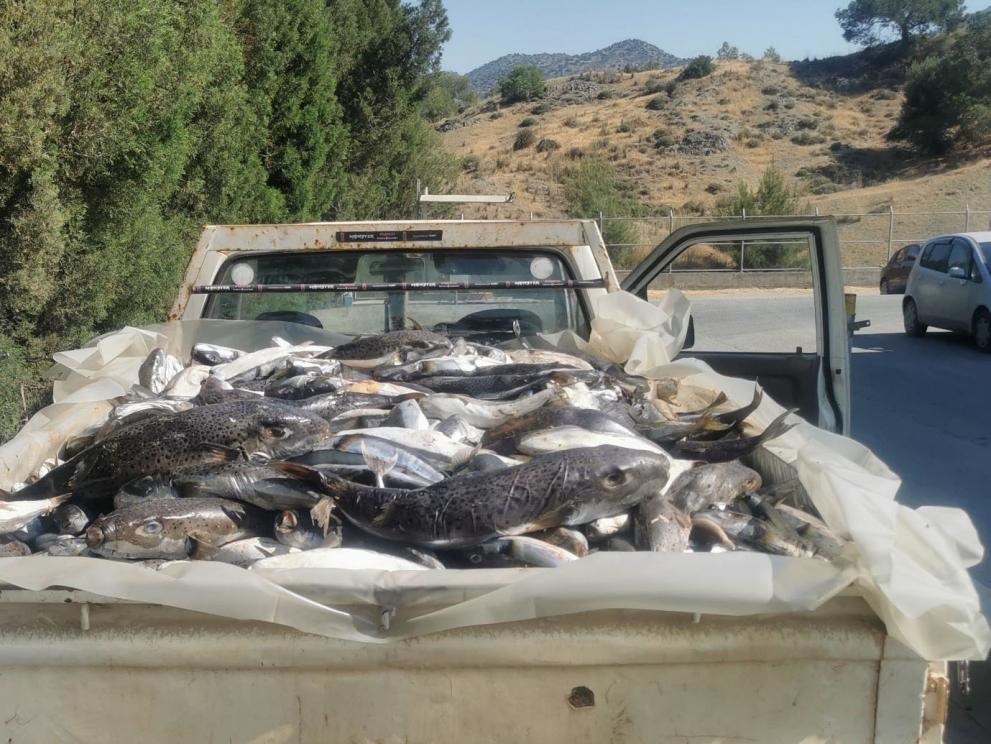
Have you ever heard about Lessepsian Migration? If not, you are in good company: a lot of people didn’t, either. Yet this is how the silver-cheeked toadfish (Lagocephalus sceleratus), also known as the invasive pufferfish, came to the Mediterranean. If the opening of the Suez Canal was a great step forward in human progress (and we have to thank Ferdinand de Lesseps, the French diplomat in charge of the canal's construction, for it), it had also a great deal of unforeseen consequences. A notable example is the massive migration of invasive marine species through the Suez Canal from the Indo-Pacific region, which had significant, and usually negative implications for the biodiversity and the economy of the affected sea basins. The pufferfish, originating from the Red Sea, represents one of those cases, as it revealed itself one of the most harmful species now present in the Mediterranean Sea.
The pufferfish is an aggressive predator with very strong teeth, and it eats whatever it can get those teeth into. This species is thriving (and it is an integral part of local biodiversity) in its own native seas, but it is devastating to the Mediterranean species and to fisheries. The pufferfish can destroy fishing nets and savage their content, causing economic losses for fishers who loose nets and whose catches are damaged to the point where they can no longer be marketed. Moreover, the pufferfish (whose scientific name in Latin means “wicked”, for a good reason) doesn’t have the silver lining of many invasive alien species, such as the blue crab, that is being good to eat: it can be deadly poisonous if eaten.
The uncontrolled spread of the pufferfish is causing substantial economic and environmental problems in Cypriot waters such as the rapid reduction in fish and mollusc populations, the destruction of fishing nets and lines, and the damage to catches. Something needs to be done, and given the lack of sale potential of the pufferfish, the solution had to be outside traditional commerce.
This is how an EU financed-project to limit the growth of the pufferfish population was set up in Cyprus. This project, implemented by professional fishers, puts pressure on the breeding pufferfish population through intensive fishing. To cover for the lack of commercial value, a funding scheme pays the fishers 3€ per kilo of pufferfish caught, landed and registered. The Cypriot Department of Fisheries and Marine Research (DFMR) is in charge of managing the project nationwide, while 14 fishers’ associations are participating, each managing its own “sub-scheme”.
The initial test for the project has been made with the Ayia Napa fishers’ association. Its members set up a team, led by Mr. Panayiotis Peratikos, responsible for collecting the invasive pufferfish caught by the association’s members, storing them and later transporting them for disposal.
Each fisher in the association brings the catches to the pufferfish team, who weighs and records all the catches. The catches are then taken to a certified waste management company which destroys them by incineration. Every three months, the team applies for compensation from the managing authorities on behalf of all the fishers participating in the scheme.
This project came at the right time, as the appearance of the pufferfish in Cypriot water made worse a situation where native fish stocks were already in poor condition and small-scale fishers were suffering financially. The support scheme improves the fishers’ finances while helping to reduce the impact of the invasive species, which in turn, by protecting the local biodiversity, improves catches of edible fish.
At the start of the project the fishers caught 30-40 tons of pufferfish per season, and they are now below 30 tons: they point out that in the last two years they have noticed a decrease in the amount of pufferfish catches, which is encouraging for the progress of the project. Fishers now have a better understanding of the breeding season of this species, so they could better plan the fight against it, with the most intensive fishing taking place in May. Knowing exactly when to target their main efforts, fishers are also well prepared for larger fishing effort and storage of bigger quantities of pufferfish. For the rest of the year they continue intensive fishing but at a slower rate.
Through this EU-financed project, the participating fishers are encouraged to cooperate for the protection of the marine environment and hence the future of their profession. Mr. Peratikos, who has been in the small-scale fisheries sector for 27 years, believes that the project has saved his future and that of his colleagues:
If it hadn’t been for the EMFF [the European Maritime and Fisheries Fund], the fishers in this area would have quit their job by now. The situation caused by the invasive species had left them no room for survival in the fisheries sector.
The fact that the fishers were simultaneously able to continue practising their profession, survive financially and protect marine biodiversity and ecosystems makes this project extremely relevant, and replicable in other areas of European waters affected by the same problem.
Did you like this story?
Then also check out the May edition of Euronews Ocean episode on invasive species.
Keep informed about the project
Project website (GR): http://www.moa.gov.cy/moa/opf/opf2014.nsf/All/196756204B42FCFCC2257FD1002DC29C?OpenDocument
Details
- Publication date
- 2 June 2022
- Author
- Directorate-General for Maritime Affairs and Fisheries




